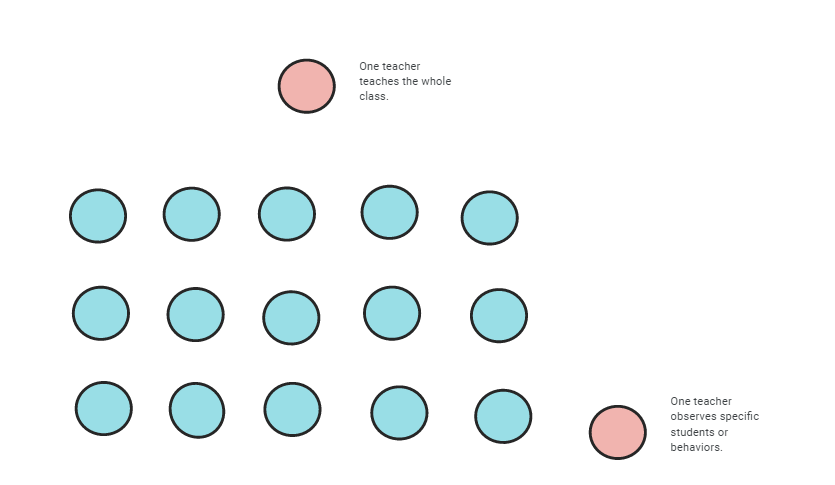
Things to think about when planning a One Teach, One Observe Lesson
- What is each teachers role?
- What and/or who will the observer be observing? Is data being collected on goal progress, student understanding, or student participation. Is data being collected on the class as a whole or only certain students?
- How is the data being collected? Do you need data collection sheets? Are you taking anecdotal notes?
- How will the data be analyzed and used?
- When will the data be analyzed and used?
Benefits
- A variety of data can easily be collected on specific students or the class as a whole.
- Allows teachers the opportunity to see the class from a different perspective.
Things to Consider
- One teacher has all the power.
- Teachers need to schedule a time to review the data, finding this time may be difficult.
One Teach, One Observe
The One Teach, One Observe model used in an elementary classroom. Video is presented by The School of Education, Chico watch on YouTube.
One Teach, One Observe
The One Teach, One Observe model used in a preschool classroom. Video is presented by Inclusive Practices for All Students and Teachers (IPAST) watch on Youtube.